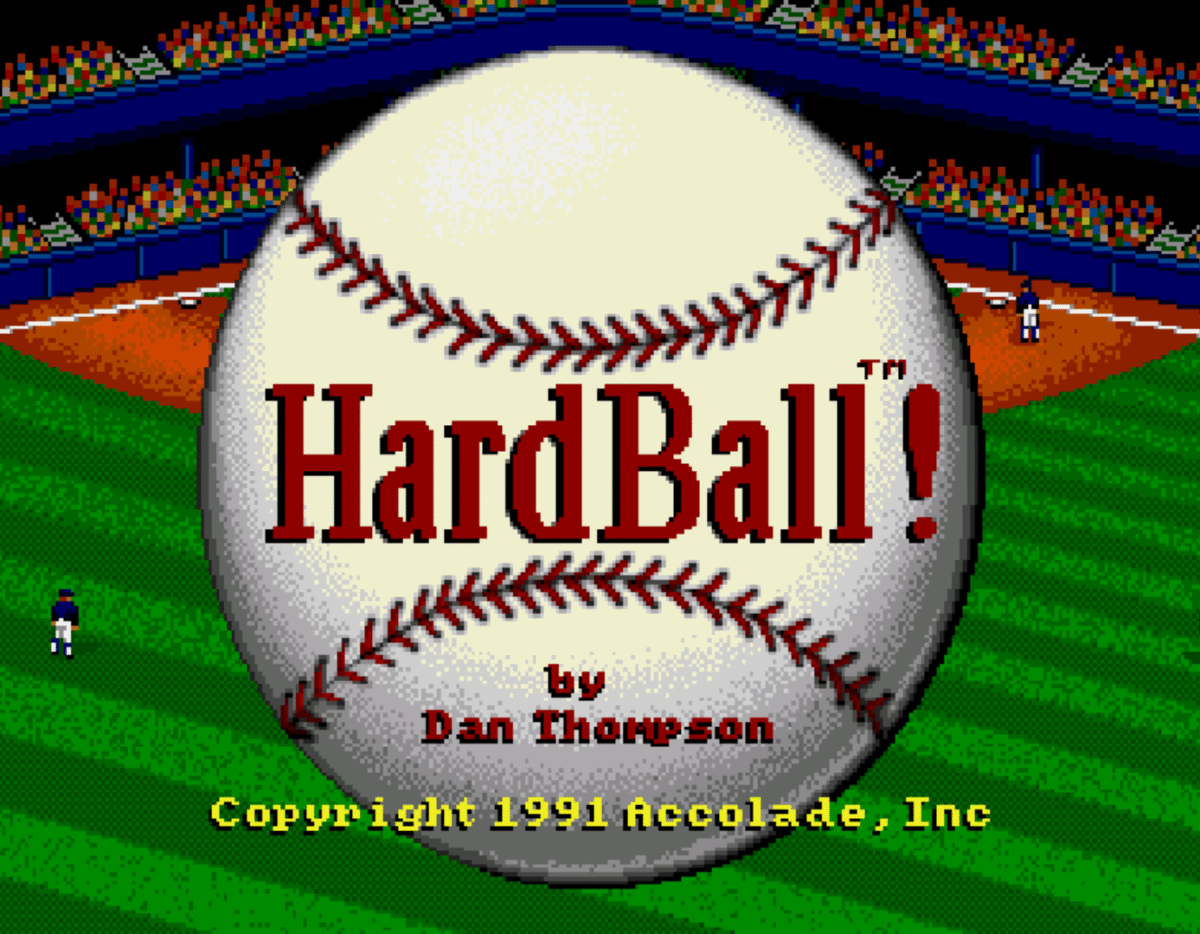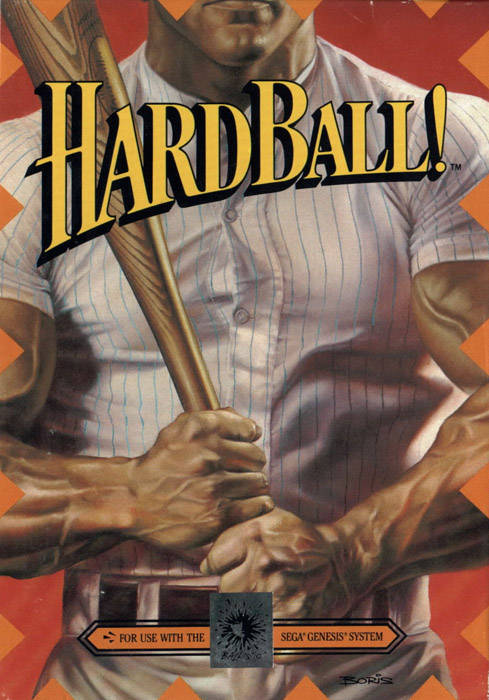
PUBLISHER: Ballistic
DEVELOPER: Accolade
RELEASE DATE: 06/1991 – (US), 1991 – (EU)
I can’t even fathom how many baseball games are on the Genesis. Got to be close to two dozen, maybe even three dozen, right? With so many baseball titles on one system, it’s pretty hard for any individual game to stand out. And at first glance, there’s not much that distinguishes HardBall! from the competition.
Graphically it’s a just sorta-OK looking game. It’s one of those games that looks 12-bit to me — like, it’s better than an NES game, but it doesn’t quite feel like it’s harnessing all of the horse power of a proper 16-bit system, either. The sprites are passable, but everything feels smaller and less detailed than it probably should be. In motion the game looks respectable, but again, it doesn’t seem like it’s taking advantage of the hardware’s capabilities. Needless to say, there’s a reason why Sega never showed this game to tout its own “Blast Processing” powers.

The audio is alright, but again, nothing memorable. The music is pretty generic and most of the sound effects seem rather low-effort. Not even the “ping” of the baseball off the bats sounds right — it sounds more like somebody is snapping a bundle of dry noodles than bopping a line drive to first base. You get the feeling that the team who made this game really didn’t understand the architecture of the Genesis; something made especially apparent by the molasses slow gameplay. As in, sometimes a pitcher will take minutes to lob the ball at a batter. But we’ll cross that bridge when we get there.
A limited array of modes await you. There’s a hop-in and play mode for one or two gamers, a batting cage mode and a World Series mode (which is essentially a best out of seven series, just like the real thing.) And that’s it as far as the options go. There’s no season mode, no playoffs mode and not even an exhibition mode, technically speaking. So unless you really like one-and-done multiplayer games, there’s not a whole lot here that’s going to appeal to hardcore baseball fans (which means there’s even less than that to appeal to non-baseball fans.)
All 26 Major League Baseball teams circa 1991 are represented in HardBall! — sorta. The game doesn’t have an official MLB license so none of the team logos or nicknames show up anywhere, but the cities do correspond to their real-world MLB counterparts and the uniforms and color schemes largely synch up, too. There are no real-world MLB players in the game, so you’re stuck taking control of totally made up characters that kinda sorta resemble actual pro baseball players. So if you take control of the Atlanta Not-Braves, don’t expect to find Greg Maddux or Tom Glavine waiting for you in the bullpen. Not that it’s much of a surprise, but pretty much all of the stadiums look the same and there’s not really any weather effects going on, either. So playing a game between Oakland at Pittsburgh or a game between Cincinnati at Texas are going to look identical, at least as far as background dressings go.
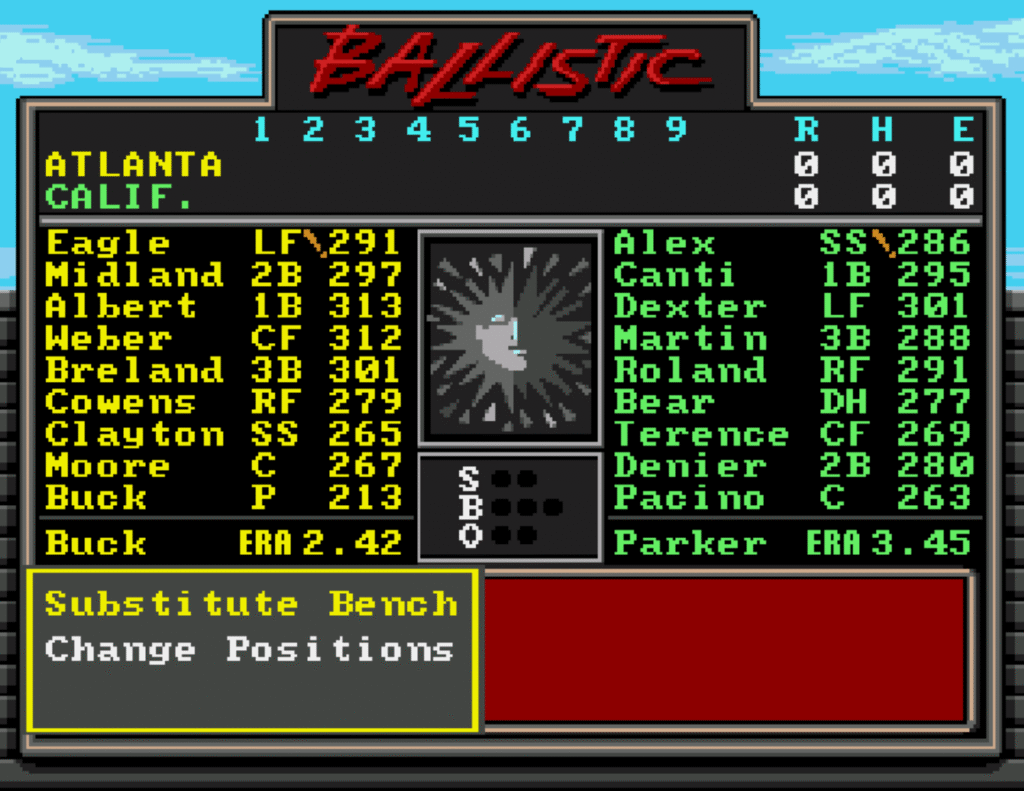
So I guess now is a good time to note that HardBall! is actually a port … of a Commodore 64 game that came out in the mid-‘80s. Now, I’m sure the core gameplay back then was pretty cutting edge for its time, but by 1991 it felt extremely dated. Like, there are NES baseball games that feel more fluid than this. Still, it’s not like HardBall! is a total failure. In fact, it actually has a few gameplay mechanics working in its favor – like some micromanagement options that just barely push it out of bad to merely below average territory.
Probably the best thing about the game are the pitching controls. You get a ton of options here, with close to a dozen different knuckleball and curveball and slider variants to choose from whenever your virtual pitcher takes the mound. This gives the game a bit more longevity, since it actually lays the groundwork for something that almost resembles strategy and game planning. Granted, a couple of the pitches are totally useless against certain batters, but the mere fact that you have the option here is pretty cool.
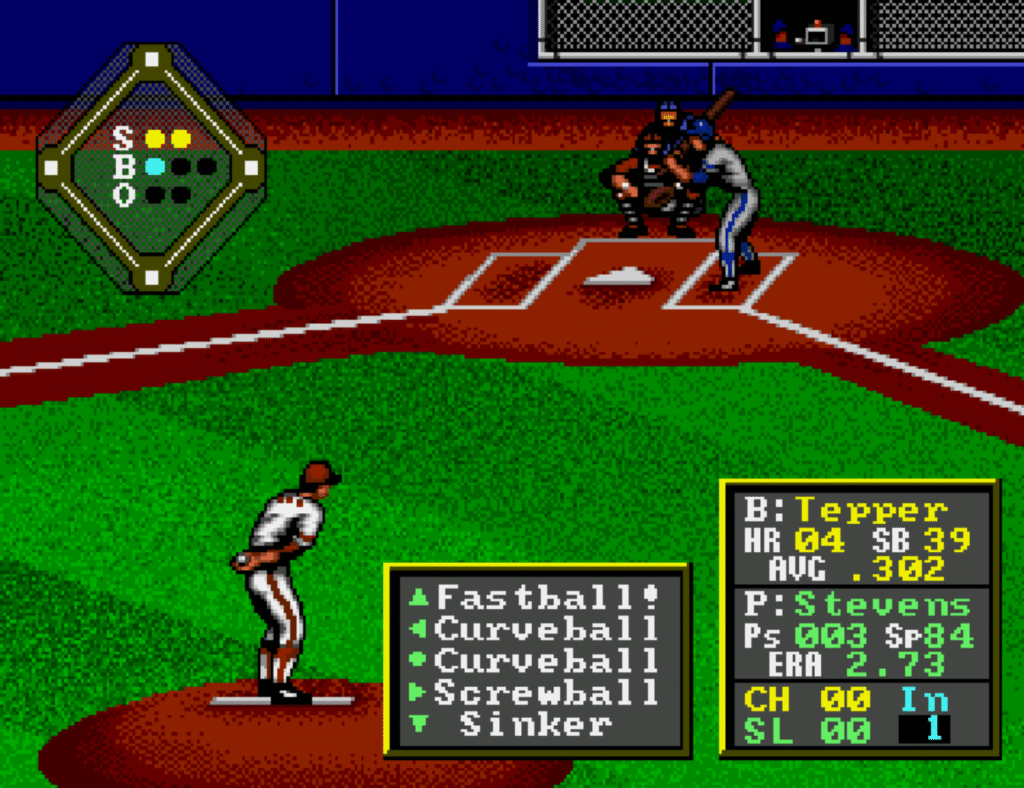
The batting … could use some work. You can move around in the batter’s box for leverage, but like most games of its ilk it’s pretty much just a glorified guessing game when it comes to positioning. Sometimes you’ll accidentally land in the sweet spot for a guaranteed home run, other times you’ll dig your cleats into the pixel dead zone where it’s a strikeout eleven times out of ten. The only real positive here is how you can hit the D-pad left or right (depending on the batter) to actually target your shots, something that really wasn’t commonplace for a lot of pre-32-bit-era baseball games. And of course, you can bunt by simply pressing the C button (although it almost always results in an automatic out and never gets you that sacrificial run you’re angling for).
The outfield controls are better than I anticipated – which is great since this is where most 2D baseball games falter, even the really good ones. Whenever the opposing team hits the ball, you can see its shadow flying over the field. And since the game moves so slowly (comparatively, anyway) very rarely will you not have enough time to get an outfielder in place to snag an easy out. Of course, line drives are a totally different thing. If one of those things rolls past first or third base, your outfield turns into a Three Stooges routine, with your CPU-controlled teammates running around like somebody put fire ants in their caps. The AI in this one isn’t very good, but on the whole, it’s not as bad as it could’ve been (and I’ve definitely seen worse on the Genesis, for sure.)
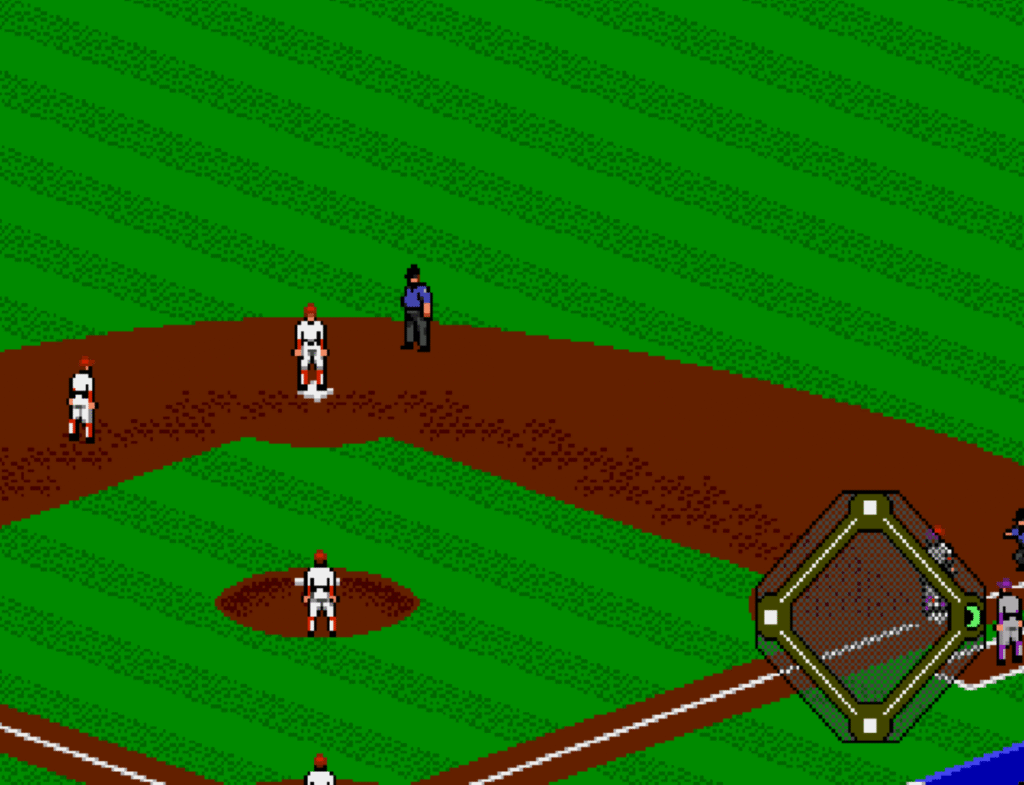
The end result is a disappointing title with some glimmers of what could’ve been a much better game. The micromanagement options are pretty deep for an early’s ‘90s console game and the interface looks fairly clean and crisp (if not a little ahead of its time, in terms of presentation.) But without the MLB license or any real world teams or any real world players, the whole package feels kinda empty. Factor in the dearth of options and some occasionally iffy offensive controls and you have a game that’s bound to frustrate more than it delights. Off the top of my head, I really can’t think of a single reason why any Genesis owner would want to go out of their way to try this one — especially when there are so many other, better baseball sims on the console.
One final note. This is actually an unlicensed Genesis release, which in turn makes it one of the few sports cartridges released on the console that fetches a pretty high aftermarket price these days. So yeah, don’t be surprised if you see this one floating around at conventions or retro gaming stores with a sticker on it listed at $50 or more — not that anybody in their right mind would even think about paying that much for it, naturally.
The Good: Lots of pitching options, decent outfield controls
The Bad: Not enough game modes, unimpressive audiovisuals
Huh? OK, the option to have corked bats made me legit LOL
C-

